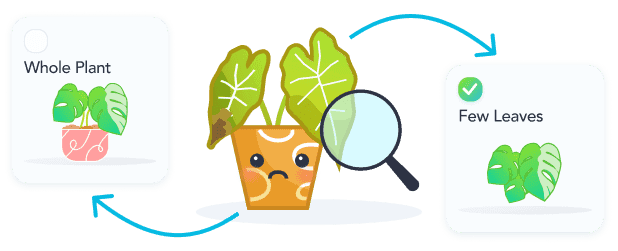Every 7d
Recommended Frequency
1 /2 cup of water
Recommended Amount
Avocado Trees require moist soil for growth. Make sure to water your plant when you feel the soil has dried.
Every 90d
Recommended Frequency
Fertilize your Avocado Tree every three months, once during spring, summer and autumn using a fertilizer high in nitrogen.
Direct Sun
Recommended
Direct Sun is the most intense form of light that your plant will receive from indoors as they will be directly exposed to the sun's rays in this spot!
Every 730d
Recommended Frequency
Repot your Avocado Tree every two years, or once it outgrows its pot.
Loamy Soil
Recommended Soil
Peat Soil is an acidic soil that retains a lot of moisture and slows decomposition. Due to such a high moisture retention this mix may require irrigation to help with draining. This soil type is best used when paired wit...
For an avocado tree to thrive, maintaining a humidity level around 40-80% is ideal. This range ensures the environment is conducive for its growth, falling into a comfortable average to high humidity level. Summary: Av...

Shop Avocado Tree
Questions about Avocado Tree
An avocado tree plant, scientifically known as Persea americana, is a fruit-bearing tree native to south-central Mexico. It thrives in warm climates and is popular for its nutrient-rich avocados, which are a staple in va...

Toxicity of Avocado Tree

Common Pests and Diseases
Root Rot
Overwatering
To address root rot in avocado trees, it's crucial to ensure proper drainage and avoid overwatering. If the tree is potted, consider repotting it into fresh, well-draining soil and a pot with adequate drainage holes. For trees planted in the ground, improve soil drainage by incorporating organic matter or creating raised beds. Reduce watering frequency, allowing the soil to dry out slightly between waterings. In severe cases, fungicides may be applied, but the focus should be on improving cultural practices to prevent recurrence.
Leaf Burn
Underwatering
To address leaf burn caused by underwatering, it's crucial to establish a consistent watering schedule that keeps the soil moist but not waterlogged. Avocado trees thrive in well-drained soil, so ensure proper drainage to prevent root rot. During dry periods, increase watering frequency, especially for young trees. A deep watering method is recommended to encourage deeper root growth, which helps the tree access water from further below the surface. Mulching around the base can also help retain soil moisture.
Avocado Lace Bug
Pseudacysta perseae
To manage avocado lace bug infestations, it's crucial to start with cultural practices such as ensuring the tree is well-watered and fertilized, as stress can make trees more susceptible. For minor infestations, removing infested leaves may suffice. In cases of severe infestation, applying insecticidal soap or neem oil can be effective. These treatments should be applied thoroughly to the undersides of leaves where the bugs reside. Always follow the product's instructions for the best results. Monitoring the trees regularly for signs of the bugs can help catch future infestations early.
Avocado Root Rot
Phytophthora cinnamomi
Managing avocado root rot requires a multifaceted approach. Firstly, ensure proper drainage as waterlogged soil exacerbates the condition. Applying phosphonate fungicides can help manage the disease by boosting the tree's natural defenses. Additionally, consider grafting susceptible varieties onto rootstocks that are resistant to Phytophthora cinnamomi. Regular monitoring and early intervention are crucial to prevent the spread and severity of the disease.

Related Plants
Other Articles:
Top 10 Most Popular Roses
Mar 22, 2022
How to Care for China Roses
Mar 11, 2022
How to Care for Chinese Money Plants
May 15, 2020
How to Grow and Care for A Bird of Paradise
Apr 26, 2020
Top 10 Plants To Grow In A Terrarium
May 31, 2022
How to Grow and Care for Lucky Bamboo
Mar 29, 2022
How to Grow and Care for Corn Plants
Mar 29, 2022
How to Care for Madagascar Dragon Trees
Mar 21, 2022



